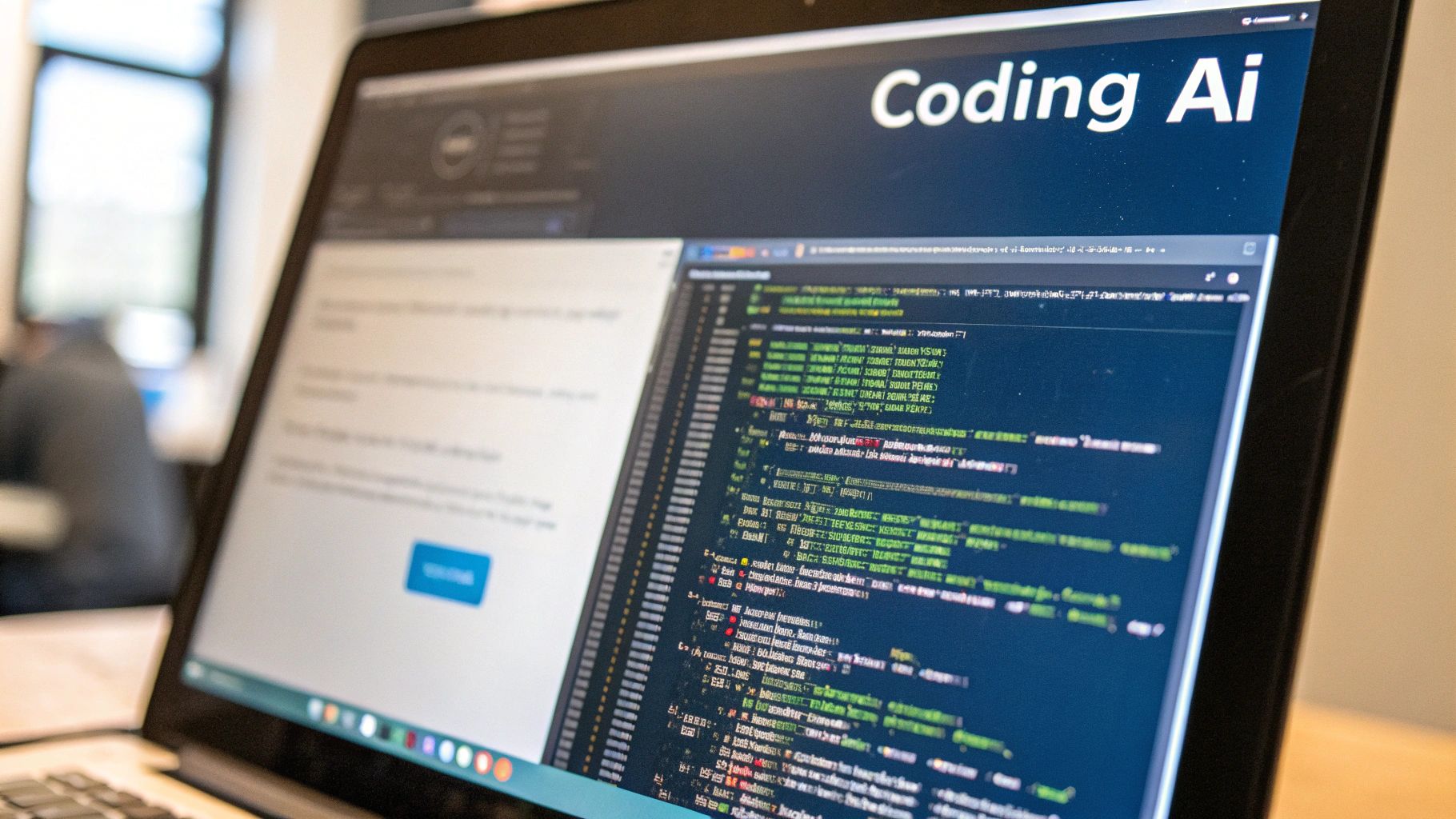The Evolution and Impact of AI and Machine Learning: A Comprehensive Guide
Understanding the Foundations of AI and Machine Learning

The story of AI and machine learning begins in the mid-20th century, establishing key ideas that still guide AI development today. By examining these early foundations, we can better appreciate how modern AI systems evolved and why they work the way they do. Let's explore the major discoveries that shaped this fascinating field.
The Genesis of AI and Machine Learning
The 1950s marked the true beginning of AI as we know it. In 1950, Alan Turing published his famous paper "Computing Machinery and Intelligence," introducing what we now call the Turing Test. This simple but powerful idea suggested that if a machine could fool humans into thinking it was human through conversation, it could be considered intelligent. Around this time, researchers built SNARC, the first artificial neural network, taking inspiration from how human brains process information. In 1958, Frank Rosenblatt created the perceptron – a machine that could actually learn from data. This breakthrough laid the groundwork for today's sophisticated neural networks.
Early Advancements and the Visionary Quest
The 1960s brought exciting progress as researchers put these early ideas into practice. ELIZA, the first chatbot, showed how machines could engage in basic conversation. Meanwhile, Shakey became the first mobile robot that could reason about its actions. This period also saw the birth of computer vision – by 1959, machines could scan images, and by 1963, they could convert 2D images into 3D models. These early steps in helping computers "see" paved the way for modern image recognition systems.
The Evolution of Computer Vision
Computer vision continued to advance through groundbreaking research in the following decades. Scientists like David Marr developed theories about how machines could process visual information, while Kunihiko Fukushima created the Neocognitron – an early version of today's convolutional neural networks. By the early 2000s, real-time face recognition had become possible. The creation of ImageNet in 2010, with its massive collection of labeled images, gave researchers the data they needed to train more powerful vision systems, especially convolutional neural networks (CNNs).
Computational Power: Fueling the AI Engine
Behind all these advances in AI lies the steady growth of computing power. Following Moore's Law, computer processing capabilities kept increasing. Around 2010, this growth accelerated dramatically, enabling the training of much more complex AI systems. Modern AI models like PaLM need vastly more computing power than models from just ten years ago. This increasing demand for processing power has pushed researchers to develop more efficient systems and explore new approaches to computer hardware and software.
Mastering Computer Vision Breakthroughs
Computer vision has grown from a niche research area into a key technology that's changing how machines understand and interact with visual data. By combining AI and machine learning techniques, computer vision now powers everything from medical diagnostics to self-driving cars. Let's explore how this field developed and where it's headed next.
From Pixels to Perception: The Evolution of Seeing Machines
The story of computer vision starts with a simple question: could we teach computers to see like humans do? In the 1960s, researchers took their first steps by creating programs that could spot basic shapes and edges in images. This might seem basic now, but it laid important groundwork. Early scanning technology let computers convert physical images into digital data for the first time. Still, these systems struggled with real-world complexity – they could handle controlled settings but often failed when faced with natural variation in lighting, angles, and objects.
The Deep Learning Revolution: Transforming Computer Vision
Everything changed when deep learning entered the picture. Special neural networks called CNNs (convolutional neural networks) proved remarkably good at learning visual patterns from large image sets. The ImageNet database, with its millions of labeled photos, gave these networks the training data they needed. Soon CNNs were matching or beating human accuracy at tasks like object recognition. This opened up new possibilities in everything from tracking moving objects to generating entirely new images.
Real-World Applications: Computer Vision in Action
These advances have practical impact across many fields. In healthcare, computer vision helps doctors spot potential tumors earlier and more reliably in medical scans. Self-driving cars use it to understand their surroundings, identify obstacles, and navigate safely. On factory floors, automated systems inspect products for defects at speeds no human could match. The technology keeps improving – what seemed impossible a few years ago is now routine.
Challenges and Future Directions: The Ongoing Quest
While computer vision has come far, some key challenges remain. Systems still need to get better at handling unexpected situations and varying conditions in the real world. Questions about AI bias and privacy also need careful attention. But research continues pushing boundaries, especially in areas like 3D vision (helping machines understand depth and space) and explainable AI (making it clearer how these systems make decisions). As these technologies mature, they'll enable new applications we can only imagine today. The field's progress shows how quickly AI capabilities are expanding while highlighting the work still ahead.
Computing Power's Essential Role in AI Progress
The remarkable progress in computer vision and AI has been made possible by one crucial factor – the massive growth in computing power. This increasing computational capacity has opened up new possibilities that were unimaginable just a few years ago. Let's explore how organizations are putting this computing power to work while managing the practical challenges that come with it.
The Computing Revolution Powering Modern AI
Computing power has grown at an incredible pace, following Moore's Law of doubling roughly every two years until 2010, when growth began accelerating even faster. This surge in processing capability has made it possible to train AI models of stunning complexity. Today's leading models like PaLM need millions of times more computing power than models from 10 years ago. This growth in computing muscle is what enables the AI applications we now use every day.
Making Computing Power Work Within Real-World Limits
The computing demands of modern AI create some major practical challenges. The sheer scale of processing power needed for today's AI models can strain budgets and infrastructure, especially for smaller teams. Success requires carefully balancing ambitious AI goals with the realities of available computing resources.
Smart Ways to Get More from Computing Resources
Forward-thinking organizations use several key approaches to maximize their computing power:
- Cloud Computing: Services like AWS, Google Cloud, and Azure give flexible access to massive computing power. Their specialized AI hardware helps teams work efficiently while controlling costs.
- Hardware Built for AI: Special processors like GPUs and TPUs dramatically speed up AI tasks. These chips excel at the parallel calculations that power most AI algorithms.
- Better Algorithms: Researchers keep finding ways to make AI work with less computing power. These improvements help more organizations put AI to work affordably.
Growing AI Systems While Watching the Bottom Line
Scaling up AI requires smart choices about computing resources. Organizations need to pick the right mix of hardware, software and cloud services for their specific needs. Key practices include:
- Resource Planning: Using monitoring tools to track computing usage helps prevent waste. Teams can adjust cloud resources up or down as needed.
- Performance Tracking: Regular checks on AI model performance help spot slowdowns early. This lets teams optimize before small issues become big problems.
- Cost Control: Choosing the right cloud pricing plans and using hardware efficiently keeps AI projects on budget.
Computing power remains essential to AI success. By making smart choices about resources while staying practical about constraints, organizations can harness AI's potential. And with hardware and software getting better all the time, AI capabilities will only grow more accessible.
Learning From Historical AI Challenges
The development of artificial intelligence has followed an uneven path marked by cycles of progress and setbacks. Known as "AI winters," these periods of reduced funding and waning interest offer important insights for today's AI development. By examining these past challenges, we can better understand how to build more effective and sustainable AI systems going forward.
The First AI Winters: Overpromising and Underdelivering
The 1970s saw the first major AI winter emerge when early promises fell short of reality. Early machine translation systems, for instance, struggled with even basic sentences – a stark contrast to the accurate translations we take for granted today. This gap between expectations and results led to funding cuts and declining public interest. A second winter followed in the 1980s when expert systems, despite some initial successes, proved too rigid and hard to scale up for broader use.
Lessons Learned and the Road to Recovery
These challenging periods pushed the AI field to refocus and adapt. Instead of chasing overly ambitious goals, researchers shifted toward solving specific, concrete problems. The limitations of expert systems highlighted the need for AI that could learn from data rather than rely solely on pre-programmed rules. This period also drove the development of more efficient algorithms that could work within the computing constraints of the time. These practical adjustments helped set the stage for AI's later comeback.
Applying Historical Lessons to Modern AI Development
Today's AI developers can learn much from these past challenges. One key lesson is the importance of realistic expectations – while AI has great potential, overselling its capabilities can undermine long-term progress. The field's history also shows the value of adaptability, as AI must evolve alongside new technologies, market needs, and ethical considerations. Building effective AI systems requires both technical skill and an understanding of the broader context they operate in.
Building a Sustainable Future for AI
Looking ahead, we can use these historical insights to create a more stable foundation for AI development. This means focusing on practical value, responsible development practices, and research that addresses fundamental challenges. Success requires balancing optimism about AI's possibilities with a clear understanding of current limitations. With this measured approach, informed by past experiences, we can better realize AI's potential while managing its risks.
Implementing Modern AI Applications
AI and machine learning are producing real results across industries today. By studying successful cases and following proven implementation strategies, organizations can effectively put these technologies to work. Let's explore how companies are making AI deliver value in practice.
Real-World Examples of AI and Machine Learning in Action
Here's how different sectors are using AI to solve concrete business challenges:
-
Healthcare: AI diagnostic tools are catching diseases earlier by spotting subtle patterns in medical images that humans might miss. By rapidly analyzing thousands of X-rays and MRIs with high accuracy, these systems help doctors make better-informed treatment decisions.
-
Manufacturing: Factory floors use AI to prevent equipment breakdowns and improve quality control. For example, sensors collect machine data that AI analyzes to predict maintenance needs before failures occur – preventing costly production delays.
-
Finance: Banks and investment firms apply AI to catch fraud, provide personalized financial guidance, and make trading decisions. This creates more secure transactions while giving customers more relevant services.
-
Retail: Stores use AI to suggest products customers are likely to want, set optimal prices, and provide 24/7 customer service through chatbots. This personal touch helps drive sales and satisfaction.
Strategies for Successful AI Implementation
To get real value from AI, organizations should follow these key practices:
-
Define Clear Objectives: Start by identifying specific problems AI can help solve. Having concrete goals helps choose the right solutions and measure success.
-
Focus on Data Quality: AI systems need clean, well-organized data to work effectively. Take time to properly prepare and structure data before training models.
-
Pick Appropriate Tools: Evaluate whether cloud platforms, open-source libraries, or specialized AI hardware best fit your needs. Choose options that match your team's skills and use case.
-
Take an Iterative Approach: Start small with pilot projects to test and refine your approach. Monitor results and gradually expand successful implementations.
Avoiding Common Pitfalls
Watch out for these typical AI implementation challenges:
-
Unrealistic Expectations: AI has limitations – be clear about what it can and cannot do. Set achievable goals that align with the technology's actual capabilities.
-
Ethical Issues: AI can reflect and amplify biases in training data. Build in checks for fairness and transparency from the start.
-
Skills Gaps: AI requires specialized knowledge to implement well. Invest in training your team or hire experts to guide the process.
Measuring the Impact of AI and Machine Learning
Track metrics tied to your original objectives to gauge success. This could mean measuring efficiency gains, cost reductions, customer satisfaction scores, or sales increases. Regular monitoring helps prove value and highlights areas needing adjustment. With clear goals, smart implementation, and ongoing measurement, organizations can make AI drive meaningful business results.
Navigating Future AI Developments
The rapid growth of AI and machine learning brings exciting possibilities along with important challenges that need careful consideration. Success with AI requires understanding key trends, developing responsible practices, and creating practical ways to evaluate new technologies. Let's explore how organizations can effectively prepare for and adapt to ongoing advances in AI.
Identifying Key Trends in AI and Machine Learning
The AI field is becoming increasingly focused on specialized solutions for specific industries and use cases. For instance, healthcare organizations now use custom AI models trained specifically on medical imaging data rather than generic models. We're also seeing major progress in making AI decisions more transparent through explainable AI (XAI), which helps users understand how systems reach their conclusions and spot potential biases. Another key development is the combination of AI with Internet of Things (IoT) devices and edge computing, enabling faster data processing right where information is collected.
Responsible AI Development: Addressing Ethical Concerns
As AI becomes more widespread, developing it responsibly is critical. This starts with tackling algorithmic bias by using diverse training data and thorough testing to ensure fair results for all users. Organizations must also create clear rules for protecting private data and being open about how they collect and use information. Using explainable AI helps ensure responsible development by making it easier to examine how AI systems make decisions and identify any issues.
Building Frameworks for Evaluating AI Technologies
When considering new AI technologies, organizations need practical ways to assess their real value beyond just looking at performance metrics. This includes analyzing the full costs of implementing and running AI systems – a highly accurate model might require too much computing power to be practical. Integration complexity is another key factor, as a simpler solution that works well with existing systems may provide more value than a complex one requiring major infrastructure changes. Long-term considerations like scalability and maintainability should also factor into evaluation frameworks.
Practical Strategies for Embracing the Future of AI
Organizations can take several concrete steps to prepare for advances in AI. Regularly following industry research and events helps spot new opportunities early. Running small pilot projects lets teams gain hands-on experience with new technologies while managing risks. Building internal expertise through employee training is essential. Working with research partners and technology providers can also provide valuable knowledge and resources. Taking these proactive steps helps organizations make the most of AI's potential while effectively handling related challenges.
Looking to stay up-to-date on the latest developments in web development, AI, and cybersecurity? DebugBar.com provides insightful news and resources on these topics and more. Check out DebugBar.com for articles, software reviews, and practical guides that will help you stay ahead of the curve.



Comments
Leave a comment